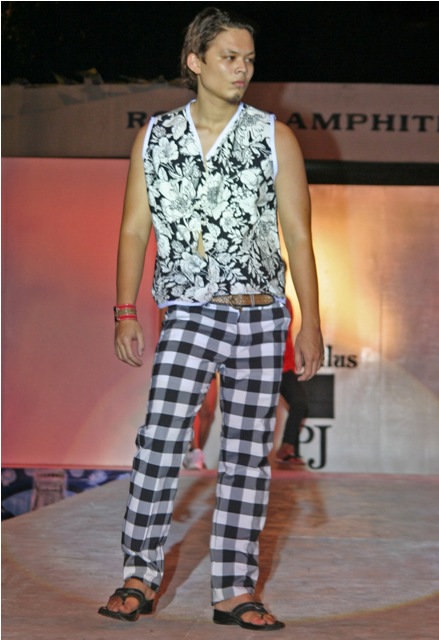 |
| photo by JV Perez (PALI) |
Known as the “Festival of Fire,” Anilao’s Banaag Festival is the only one
of its kind in the region. Banaag is a Hiligaynon term that
refers to the light emitted usually from a torch. It is a modernized theatrical presentation competition
among tribes that is highlighted by a spectacular exhibition fire dancing commonly
using torches.
With this year’s
theme,” Nagabanaag nga Handum: Palibot kag Dunang Manggad Atipanon, “ the 9th
Banaag Festival coincides with the 73rd Foundation Anniversary
celebration of Anilao as an independent town and series of activities are set for
everyone starting on October 28, Sunday with the Opening of Street and Food Fair or “Timo-Timo sa Kalye
2012;” October 29, Monday with the
Unveiling of Exhibits and Official Costume of the 8 Competing tribes for Banaag
Festival 2012; October 31, Wednesday at 5:00 p.m. for the Opening Program for
the Street Dance Competition and Banaag sa
Langit, a Fireworks Festival Display; November
1, Thursday at 9:00 a.m. with a
Mass and at 6:00 p.m. with a Masquerade
Ball; and November 2, Friday at 6:00 p.m. with the Dance Drama Competition, Awarding
Ceremony and Merry Making.
Banaag revisits
Anilao's history as it acknowledge the significance of light from the torch that
once saved their people’s lives as they fought for freedom against the Muslim
pirates.
Muslim
pirates explored the Visayas by
its seas and rivers through warfare. Although, it has been said that the Moros had raided the Visayan
barangays long before the Spanish era. Piratical raids in the area began dramatically in
the 16th till the 18th century when Muslim pirates
destroyed Christian pueblos. Taking their caracoas or outriggered vessels with thirty to forty rowers on each side, the islands in the area, mostly coastal or river-mouth
were ravaged by
raids.
 |
| photo by JV Perez (PALI) |
old barangays did not hold much
wealth, but the captives taken and were sold in the slave markets in the islands to the south of the
archipelago were enough prize. Barangays that
were Christianized were said to be a more tempting target. More people are in its pueblos; with churches adorned with gold and silver ornaments and fine altar pieces. It is for the
reason that these new pueblos were larger than the old barangays, and therefore offered a
richer prize. Churches were burned along with the church treasures such as chalices and images abused, and captives carried away as slaves. Many were
killed.
Due to its coastal
location, Iloilo was also constant threat from Moro marauders looking for slaves. It is said that watchtowers were built to protect Christian villages. It was said that piratical attacks were so persistent
and were successful that in many of our towns, including Anilao, many inhabitants
were killed or enslaved.
And because of this,
construction of numerous coastal fortifications or watchtowers in the northern
and southern areas were made and form part of a system of communication where every
fortifications, placed at intervals along each town’s borders, was in sight of
the next in the line. A system of signaling was used between them. For Anilao,
they used fire to warn the natives of an incoming raid.
 |
| photo by JV Perez (PALI) |
The
celebration is dedicated to the brave Anilaonons who lost their lives struggling
for peace and freedom. Thus, dancing
with fire, that often
includes visual and stylistic elements, has
been a traditional part of culture of Anilao when presenting their festival. During
the festival performance night torches were often twirled and swung about by
dancers. Performances always involve a
flashy demonstration of artful twirling while dancing on fire. Fire dancing is
performed to music played on drums that heat up the performers’ hearts, move their bodies, quicken their minds, and lift their
spirits.
To get to Anilao, one
can take a van or bus at Tagbak Terminal in Jaro. Anilao is located 40
kilometers northeast of Iloilo City. Comprised of 21 barangays It is bounded in
the north by the town of San Enrique; the highest mountain of the town in the
west; in the south by Barotac Nuevo; and the Guimaras Strait in the east.


















.jpg)
.jpg)









